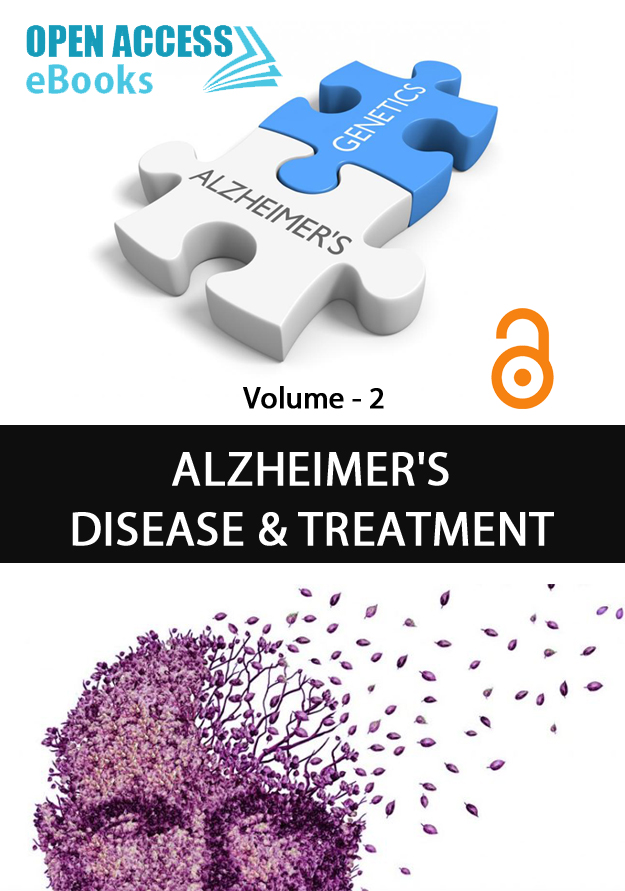List of Chapters
Imaging Morphologic Substrates and Molecular Changes for Differential Diagnosis of Vascular Dementia
Author(s): Wolf-Dieter Heis
The differential diagnosis of dementias is based on symptoms of cognitive and memory impairment and is supported by results of neuropsychological tests and of imaging. Whereas computed tomography and magnetic resonance imaging are able to detect morphologic substrates of vascular dementias as multi-infarct syndroms, large vessel and critically located strokes, small vessel disease and hemorrhages, these modalities cannot determine molecular causes and functional consequences of the underlying pathologies...
Down Syndrome for A Better Understanding Alzheimer Disease
Author(s): London J
AD is the most common of dementia and affect millions individuals worldwhile characterized mainly by loss of memory and cognitive decline but also by sensory and motor impairments. Most AD cases are sporadic (SAD 98% of cases) at age more than 60 years but some have a genetic inheritance (2% around) at age earlier than 60 years and some at even 40 years [1]. The autosomal dominant AD (ADAD) are related to mutations on presenilin 1 (PSEN1 ; chromosome 14 ; 18-50% ADAD cases) and presenilin 2 (PSEN2 ; chromosome 1; <5% ADAD cases) and on Amyloid Precusor Protein (APP ; chromosome 21; 10-15% ADAD cases)...
Mitochondria in Alzheimer’s disease: An Electron Microscopy Study
Author(s): Stavros J Baloyannis MD, PhD*
Alzheimer’s disease is a progressive neurodegenerative disorder leading gradually in profound dementia, with all the tragic consequence on the everyday life and the social behavior of the patients. The pathogenetic background of the disease is quite enigmatic, implicating several innate mechanisms and additional exterior factors formatting a chain of pathogenetic processes, resulting in synaptic loss, selective neuronal loss and serious decline of the mental faculties eventually. Among the pathogenetic factors the oxidative stress and the mitochondrial dysfunction may play a substantial role in the initial stage of the disease...
Autophagy Dysregulation in Alzheimer’s Disease: Plant Polyphenols as A Possible Preventive and Therapeutic Treatment
Author(s): Manuela Leri1*; Massimo Stefani; Monica Bucciantini
The self-degradative process of autophagy plays a fundamental role in cellular, tissue, organismal homeostasis and in balancing sources of energy at critical times in development and in response to nutrient stress. Autophagy also plays a housekeeping role in removing misfolded or aggregated proteins, clearing dysfunctional organelles and intracellular pathogens. Autophagy is generally considered as a pro-survival mechanism although its deregulation has been linked to non-apoptotic cell death. Autophagy efficiency declines with age, with consequent accumulation of harmful protein aggregates and damaged mitochondria and increased oxidative stress.
miRNAs as Biological Markers in the Diagnosis and Treatment of Alzheimer’s Disease
Author(s): Ezgi Keske; Özlem Sağlam Uçar; Ayyub Ebrahimi*
Although the diagnosis and treatment studies that can be developed by clarifying the pathology of Alzheimer’s disease (AD), which is one of the most common dementia in the world, have been studied intensively, an explicit result cannot be obtained. Although the diagnosis and treatment studies that can be developed by clarifying the pathology of Alzheimer’s disease (AD), which is one of the most common dementia in the world, have been studied intensively, an explicit result cannot be obtained...
Type 2 Diabetes Mellitus: A Risk Factor for Alzheimer’s Disease
Author(s): Ruchi Jakhmola Mani; Khyati Mittal; Deepshikha Pande Katare*
Alzheimer’s disease (AD) and Type 2 Diabetes Mellitus (T2DM) are two most damaging endocrine disorders. T2DM patients are at a higher risk of developing dementia of AD type later in their lives and therefore this shift in pathology should be closely monitored. Insulin resistance is a common phenomenon in both T2DM and AD and is the probable triggering process in this pathology. The insensitivity to glucose sensing in brain causes eventual loss of neurons, increased inflammation and stress. In this chapter, we have discussed the common molecular links between T2DM and AD and have covered the route of progression of T3D...
